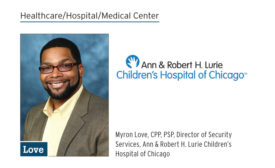Home » hospital security
Articles Tagged with ''hospital security''
From the ER to the C-Suite, Hospitals Tighten Up Security
Behavioral health, the pharmacy, the ER and the labor-and-delivery areas remain large areas of security focus for hospitals.
June 1, 2017
Healthcare Data Compliance: Maintaining Integrity, Privacy and Security
For healthcare and healthcare data security managers – both physical and digital – it’s game on when it comes to cyber risks.
March 1, 2017
Your #1 De-Escalation Technique: Customer Service
The path to ‘zero incidents’ starts with zero excuses.
October 1, 2016
Sign-up to receive top management & result-driven techniques in the industry.
Join over 20,000+ industry leaders who receive our premium content.
SIGN UP TODAY!Copyright ©2024. All Rights Reserved BNP Media.
Design, CMS, Hosting & Web Development :: ePublishing







